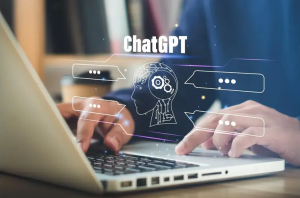Ever wonder how some companies seem to get ahead so fast? It’s no secret. They’ve discovered the power of Al and are using tools like ChatGPT to boost productivity and profits. As an entrepreneur or business professional, you owe it to yourself and your company to unlock the potential of this technology. ChatGPT can take over repetitive tasks, handle customer service queries, and even generate new ideas to spur innovation. The possibilities are endless if you know how to tap into them. In this course, you’ll learn everything you need to put ChatGPT to work for you.
Mastering ChatGPT: A Powerful Al Tool for Business

ChatGPT is one of the most advanced A.I. systems today, with nearly human-level language understanding. Businesses are harnessing its power to boost productivity and gain a competitive edge.
This course teaches you how to leverage ChatGPT for your company. You’ll learn frameworks for crafting effective prompts that yield useful responses. With practice, you’ll be automating and optimising key work processes in no time.
ChatGPT can handle a variety of tasks like conducting research, generating content ideas, and more. For example, it can:
- Summarise key points from industry reports or news articles
- Come up with blog post topics and outlines
- Suggest social media content and hashtags
The possibilities are endless. Many are using ChatGPT for customer service, HR, finance, and beyond.
This course provides hands-on experience designing custom workflows for your needs. You’ll identify opportunities for Al integration and build the prompts to make it happen. With the right approach, ChatGPT becomes a powerful tool for boosting productivity, saving time and money, and gaining a competitive advantage.
The future is here. Let Aventis Learning Group equip you and your team with the skills to leverage it. Our ChatGPT course offers practical, forward- looking Al training for businesses ready to succeed with technology.
Designing Effective Prompts and Optimising ChatGPT for Business Needs

To get the most out of ChatGPT for your business, you’ll want to design prompts that tap into its capabilities. Here are some tips for crafting effective prompts:
Keep prompts concise
ChatGPT works best when prompts are short and to the point, around 1 to 3 sentences. Be clear in what you’re asking.
Use open-ended questions
Ask open-ended questions, rather than those with a single answer. For example, say “What are some ways we could improve our customer service?” rather than “How can we improve our customer service?” Open- ended questions will yield more useful responses.
Give context where needed
Provide relevant context about your company, customers, products, industry, etc. so ChatGPT can give a tailored response. For example, “As an e-commerce company selling electronics, what are some ways we could boost online sales?” Context helps ChatGPT understand your specific situation.
Rephrase for new ideas
Try rephrasing your prompt in different ways to get new suggestions. ChatGPT may provide varied responses to slightly different prompts on the same topic.
Review and refine
Go through ChatGPT’s responses and look for the most useful ideas. Then, refine and rephrase your prompts to get more details on the best suggestions. Continue optimising prompts to get the most value from ChatGPT.
With practice, you’ll be crafting prompts that tap into ChatGPT’s potential to generate innovative ideas and solutions for your business needs. Optimising how you interface with this Al tool is key to staying ahead of the competition.
Real-World Applications: Automating and Improving Workflows With ChatGPT

ChatGPT and other Al tools are enabling businesses to automate repetitive tasks and streamline key workflows.
Many companies are using ChatGPT to handle basic customer service inquiries. It can respond to FAQs, address account questions, and more. This frees up human agents to handle more complex issues.
For example, an e-commerce company implemented ChatGPT to manage order status requests and shipping updates. This reduced call volume by over 50% and improved the customer experience.
Content Creation
Content creation is time-consuming and labor-intensive. ChatGPT can generate draft blog posts, social media content, newsletters, and more. Marketers provide prompts with keywords, topics, and length, and ChatGPT produces a draft. Humans then review, edit as needed, and publish.
A marketing agency is using ChatGPT to draft social media posts and basic blog content. This has allowed them to increase output by over 30% without adding staff. Clients get more content, faster and at a lower cost.
Data Entry and Processing
Data entry involves manually inputting information into systems and spreadsheets. ChatGPT can automate this repetitive work, extracting data from documents and forms and inputting it into the required databases and systems.
An accounting firm leveraged ChatGPT to input expense receipts and invoices into their bookkeeping system. This reduced data entry time by around 50% per week, allowing accountants to focus on higher-level work.
The possibilities are endless. Any repetitive, rules-based task is a candidate for automation using ChatGPT. The key is identifying workflows that will benefit most from Al and designing effective prompts and training data to achieve the best results. With the right approach, ChatGPT can drive major productivity and profit gains.
Conclusion
So there you have it – ChatGPT and other Al are changing the face of business and opening up new opportunities. The companies that embrace these tools and leverage them to streamline processes, reduce costs, and boost the bottom line will be the ones that get ahead. What are you waiting for? Start thinking about how ChatGPT could transform your business and take it to the next level. The future is here, so get on board before your competitors leave you in the dust. With some time and effort, you’ll be automating tasks and improving workflows in no time. The possibilities are endless if you have the vision and motivation to make it happen. Now go get started and sign up now!

